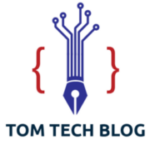The Role of Technology in Revolutionizing the Candidate Experience

In today’s fast-paced job market, technology plays a crucial role in transforming how job seekers experience the hiring process. Companies are increasingly adopting new tools and platforms to make the recruitment process smoother, faster, and more engaging. This shift is not only benefiting the employers but also significantly improving the candidate experience. Let’s explore how technology is revolutionizing the candidate experience and what this means for job seekers and companies alike.
Streamlined Application Processes
One of the most significant ways technology is enhancing the candidate experience is by simplifying and speeding up the application process. Traditionally, applying for a job involved filling out lengthy forms and submitting resumes manually. Today, many companies use Applicant Tracking Systems (ATS) to automate and streamline these tasks.
ATS software allows candidates to apply for jobs with just a few clicks. They can upload their resumes, cover letters, and other documents easily. Some systems even allow candidates to apply using their LinkedIn profiles or other social media accounts, which saves time and reduces the hassle of filling out repetitive information.
Personalized Communication
Effective communication is key to a positive candidate experience. Technology has made it easier for companies to communicate with candidates throughout the hiring process. Automated email systems and chatbots help companies keep candidates informed about their application status, interview schedules, and next steps.
Personalized communication is also possible thanks to Customer Relationship Management (CRM) tools designed for recruiting. These tools help recruiters track and manage candidate interactions, ensuring that each candidate receives timely and relevant updates. This not only keeps candidates engaged but also enhances their overall experience.
Virtual Interviews and Assessments
Gone are the days of long waits and travel for interviews. Technology has made it possible to conduct interviews and assessments online. Video conferencing tools like Zoom, Microsoft Teams, and Google Meet allow candidates to participate in interviews from the comfort of their homes.

Virtual interviews are convenient for both candidates and employers. Candidates can save time and avoid travel expenses, while employers can interview candidates from anywhere in the world. Additionally, some companies use virtual assessment platforms to evaluate candidates’ skills through online tests and simulations, providing a more flexible and efficient way to assess candidates.
Enhanced Candidate Engagement
Engagement is crucial for keeping candidates interested and motivated throughout the hiring process. Technology offers various tools to enhance candidate engagement. For instance, gamification is becoming a popular trend in recruitment. Companies are using game-like elements, such as quizzes and challenges, to make the application process more interactive and enjoyable.
Moreover, social media platforms and company websites play a significant role in engaging candidates. By sharing company culture, employee testimonials, and job openings on social media, companies can attract and engage potential candidates more effectively.
Data-Driven Insights
Data analytics has become an essential part of modern recruitment. Technology allows companies to collect and analyze data related to the hiring process. This includes metrics such as time-to-fill, cost-per-hire, and candidate source effectiveness.
By analyzing this data, companies can identify trends, measure the success of their recruitment strategies, and make data-driven decisions to improve the candidate experience. For example, if data shows that candidates are dropping out at a specific stage of the application process, companies can investigate and address the issue to enhance the overall experience.
Improved Onboarding
The candidate’s experience doesn’t end once a job offer is accepted. Technology also plays a significant role in improving the onboarding process. Modern onboarding platforms provide new hires with all the information and resources they need to start their new role smoothly.
These platforms often include features like digital document signing, training modules, and interactive orientation sessions. By providing a seamless and engaging onboarding experience, companies can help new hires feel welcome and prepared, which contributes to their overall satisfaction and success in their new roles.
Accessibility and Inclusivity
Technology also contributes to making the recruitment process more accessible and inclusive. For candidates with disabilities, there are various tools and technologies designed to ensure equal access to job opportunities. For example, screen readers, speech-to-text software, and accessible online forms help candidates with visual or motor impairments participate fully in the application process.
Additionally, many companies are using AI-driven tools to reduce unconscious bias in recruitment. These tools can help ensure that job descriptions and candidate evaluations are fair and unbiased, promoting a more inclusive hiring process.
Feedback and Continuous Improvement
Technology enables companies to gather feedback from candidates about their experience during the hiring process. Surveys and feedback forms can be sent out to candidates after their interviews or after they have completed the application process.

This feedback is valuable for companies to understand what is working well and what needs improvement. By integrating candidate experience software, companies can streamline the feedback process and gain deeper insights into the candidate journey, allowing for continuous enhancements to the recruitment experience. By continuously gathering and analyzing candidate feedback, companies can make informed adjustments to enhance the candidate experience and ensure that their recruitment processes are as effective and candidate-friendly as possible.
Future Trends and Innovations
The role of technology in recruitment is constantly evolving. Looking ahead, we can expect even more innovations that will further transform the candidate experience. For instance, advancements in artificial intelligence and machine learning could lead to more sophisticated tools for matching candidates with job opportunities.
Virtual reality (VR) and augmented reality (AR) might also play a role in recruitment, providing immersive experiences for candidates to explore potential workplaces and job roles. As technology continues to advance, it will be exciting to see how these new tools and innovations will shape the future of recruitment and enhance the candidate experience.
Conclusion
Technology is revolutionizing the candidate experience in numerous ways. From streamlining application processes and improving communication to enhancing engagement and onboarding, the impact of technology on recruitment is profound. As companies continue to embrace new technologies and innovations, the candidate experience will likely become even more efficient, engaging, and inclusive.
For job seekers, this means a more seamless and positive experience throughout the hiring process. For employers, it offers the opportunity to attract and retain top talent more effectively. Embracing technology in recruitment is not just a trend but a crucial step toward creating a better, more efficient, and more enjoyable candidate experience.



